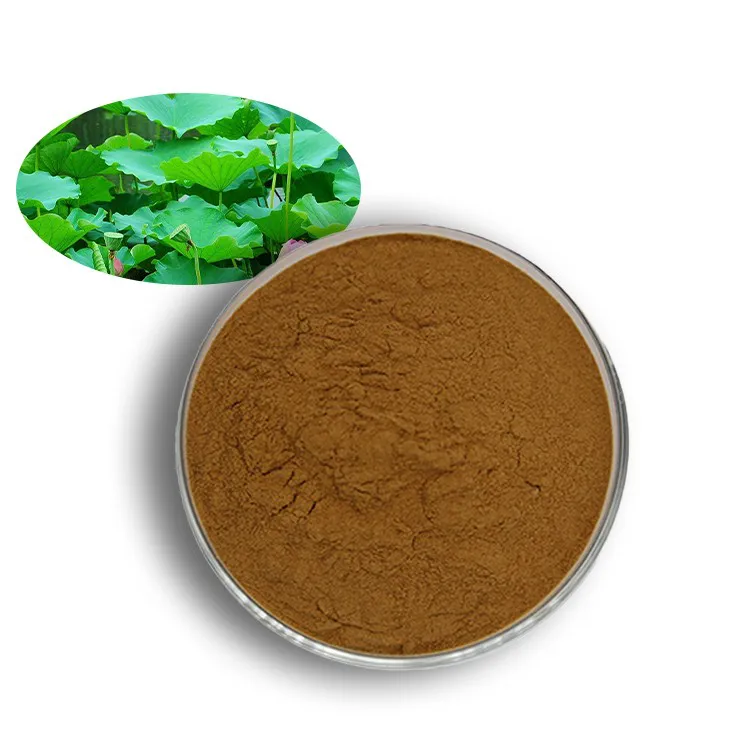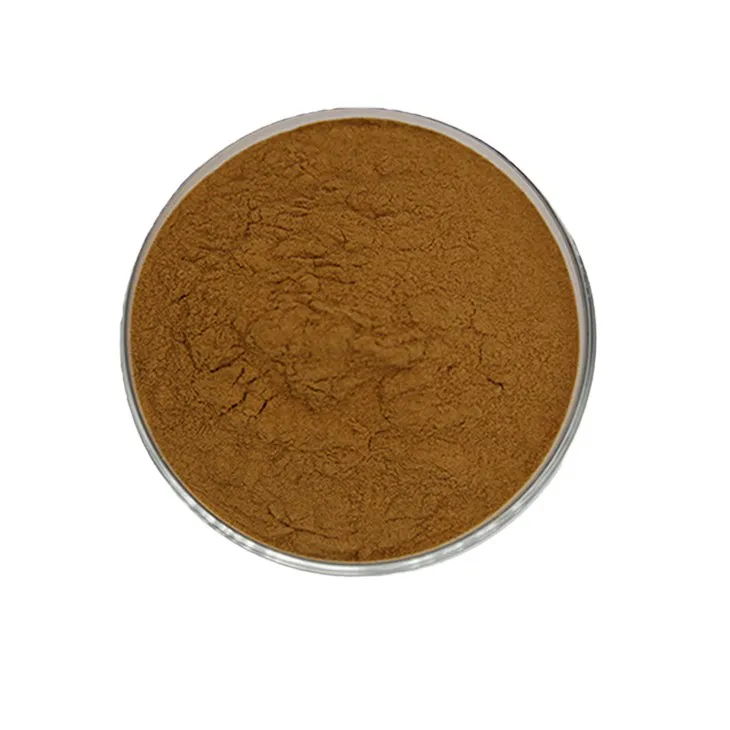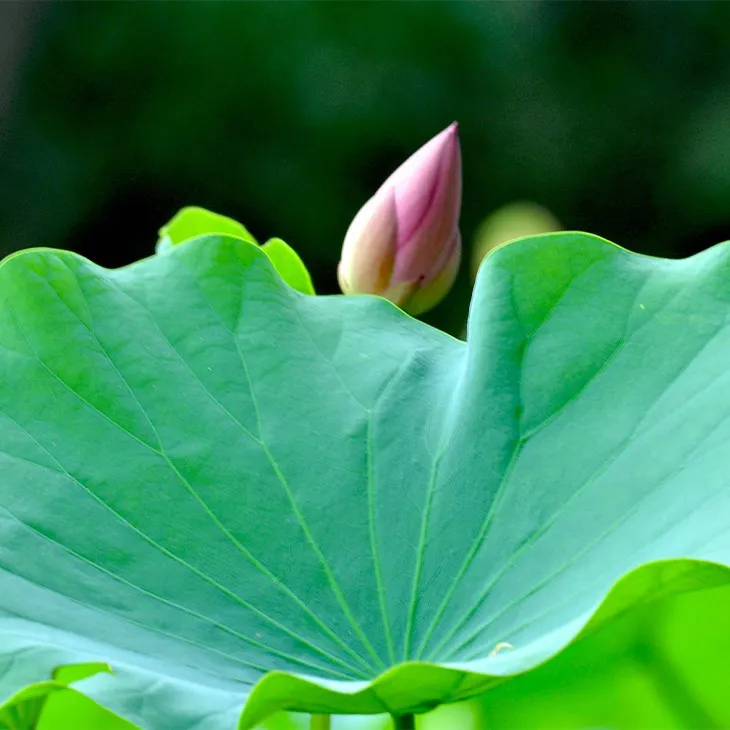- 0086-571-85302990
- sales@greenskybio.com
Extract lotus leaf extract by steam distillation.
2024-11-29

1. Introduction to Lotus Leaves
Lotus leaves have long been recognized for their significance in both traditional medicine and modern applications. In traditional medicine systems, such as Traditional Chinese Medicine (TCM), lotus leaves are often used for their various beneficial properties. They are believed to have functions like clearing heat, removing dampness, and promoting digestion.
In modern applications, the potential of lotus leaves has been further explored. Scientists have found that lotus leaves contain a variety of bioactive compounds, which may have antioxidant, anti - inflammatory, and antimicrobial properties. These properties make lotus leaves a valuable source for the development of natural products in the fields of cosmetics, food additives, and pharmaceuticals.

2. Steam Distillation Procedure
2.1 Raw Material Handling
The first step in the steam distillation of Lotus leaf extract is the proper handling of the raw materials. High - quality lotus leaves should be selected. These leaves should be fresh, free from diseases and pests, and preferably harvested at the appropriate time. After harvesting, the lotus leaves need to be thoroughly cleaned to remove any dirt, debris, or other contaminants. This can be done by gently washing the leaves with clean water.
2.2 Preparation for Distillation
Once the lotus leaves are clean, they need to be prepared for distillation. The leaves are usually cut or shredded into smaller pieces. This increases the surface area of the leaves, which in turn promotes more efficient extraction during the distillation process. The shredded lotus leaves are then placed into the distillation apparatus. It is important to ensure that the amount of lotus leaves added is appropriate according to the capacity of the distillation equipment.
2.3 Steam Generation and Distillation
Steam is then generated in the distillation apparatus. The steam passes through the shredded lotus leaves, causing the volatile compounds in the leaves to vaporize. These vaporized compounds, along with the steam, are carried upwards in the distillation column. The temperature and pressure during the steam distillation process need to be carefully controlled. Generally, a relatively low - pressure and appropriate temperature (usually around 100°C) are maintained to ensure that the valuable compounds in the lotus leaves are not damaged.
2.4 Condensation
As the vapor - steam mixture rises in the distillation column, it then enters the condenser. In the condenser, the vapor - steam mixture is cooled down, causing it to condense back into a liquid state. The condenser is usually a coiled tube or a plate - type heat exchanger, through which cold water or another coolant is circulated to facilitate the condensation process.
2.5 Separation and Collection of the Extract
After condensation, the resulting liquid is a mixture of water and the Lotus leaf extract. Since the extract is usually immiscible with water or has a different density, it can be separated from the water. This can be achieved through methods such as decantation or using a separatory funnel. The separated Lotus leaf extract is then collected in a clean and dry container. It is important to note that the collected extract may still contain some impurities, and further purification steps may be required depending on the intended use of the extract.

3. Safety Precautions during Steam Distillation
During the steam distillation process of lotus leaf extract, several safety precautions need to be taken.
- Proper Equipment Maintenance: The distillation equipment should be regularly inspected and maintained to ensure its proper functioning. Any leaks in the apparatus should be repaired immediately to prevent steam or volatile compounds from escaping.
- Temperature and Pressure Control: As mentioned earlier, precise control of temperature and pressure is crucial. Overheating or excessive pressure can lead to equipment damage or even explosions. Therefore, appropriate safety valves and temperature sensors should be installed in the distillation system.
- Handling of Chemicals: Although lotus leaf distillation mainly involves natural materials, some chemicals may be used for cleaning or maintaining the equipment. These chemicals should be handled with care, following the proper safety protocols. For example, corrosive chemicals should be stored separately and used with appropriate protective equipment.
- Fire Prevention: Since steam distillation involves heat sources, there is a risk of fire. The distillation area should be kept clean and free from flammable materials. Fire extinguishing equipment, such as fire extinguishers and fire blankets, should be readily available in the vicinity.

4. Quality Control Measures for Lotus Leaf Extract
To ensure the quality of the lotus leaf extract obtained through steam distillation, several quality control measures need to be implemented.
- Analysis of Chemical Composition: The chemical composition of the extract should be analyzed using techniques such as gas chromatography - mass spectrometry (GC - MS) or high - performance liquid chromatography (HPLC). This helps to identify the main bioactive compounds present in the extract and to ensure that they are within the expected range.
- Purity Testing: Tests for purity should be carried out to determine the presence of impurities in the extract. Impurities can affect the quality and safety of the extract. Methods such as ultraviolet - visible spectroscopy (UV - Vis) can be used to detect impurities based on their absorption spectra.
- Microbial Testing: Since the lotus leaf extract may be used in various applications, including in the food and cosmetics industries, microbial testing is essential. Tests for the presence of bacteria, fungi, and other microorganisms should be performed to ensure that the extract meets the required microbiological standards.
- Stability Testing: The stability of the lotus leaf extract should be evaluated over time. This includes testing its stability under different storage conditions, such as temperature, humidity, and light exposure. Stability testing helps to determine the shelf - life of the extract and any potential degradation products that may form over time.

5. Contributions to Green and Sustainable Products
The extraction of lotus leaf extract by steam distillation has several potential contributions to the development of green and sustainable products.
- Natural and Renewable Source: Lotus leaves are a natural and renewable resource. Their extraction for valuable compounds is a more sustainable alternative compared to the use of synthetic chemicals. This is in line with the growing trend towards the use of natural ingredients in various industries.
- Low - Energy Consumption: Steam distillation is a relatively low - energy - consuming process compared to some other extraction methods. The use of steam as the extraction medium and the relatively simple distillation apparatus contribute to its energy - efficiency. This is beneficial for reducing the carbon footprint associated with the extraction process.
- Biodegradability: The lotus leaf extract obtained through steam distillation is generally more biodegradable compared to synthetic compounds. This makes it a more environmentally friendly option for applications such as in cosmetics and detergents, where the end - products are likely to be disposed of into the environment.
- Potential for Waste Reduction: In some cases, the by - products of the lotus leaf extraction process, such as the remaining plant material after distillation, can be further utilized. For example, it can be used as compost or for the production of bio - based materials, thereby reducing waste and promoting a circular economy.
FAQ:
1. What are the traditional medical uses of lotus leaves?
Lotus leaves have been used in traditional medicine for various purposes. They are often associated with functions such as reducing heat, promoting digestion, and relieving dampness. In some traditional medicine systems, lotus leaves are used to treat symptoms like diarrhea, indigestion, and excessive heat in the body.
2. How are lotus leaves prepared before steam distillation?
Before steam distillation, lotus leaves need to be properly prepared. First, they should be carefully collected, ensuring that they are fresh and free from contaminants. Then, they are usually washed thoroughly to remove dirt, dust, and other impurities. After that, the lotus leaves may be cut or shredded into smaller pieces to increase the surface area for more efficient distillation.
3. What are the key steps in the steam distillation process of lotus leaves?
The steam distillation process of lotus leaves involves several key steps. Firstly, water is heated to produce steam. The prepared lotus leaf pieces are then placed in a distillation apparatus. The steam passes through the lotus leaves, causing the volatile compounds in the leaves to vaporize. These vaporized compounds, along with the steam, are then condensed. Finally, the condensed liquid is collected, and the lotus leaf extract is separated from the water.
4. Why are safety precautions important during the steam distillation of lotus leaves?
Safety precautions are crucial during the steam distillation of lotus leaves. High temperatures and steam are involved in the process. There is a risk of burns from the hot equipment or steam. Also, improper handling of the distillation apparatus may lead to leaks or explosions. Moreover, some of the chemicals released during the distillation process may be harmful if inhaled in large quantities, so proper ventilation is necessary.
5. How is the quality of lotus leaf extract controlled?
The quality control of lotus leaf extract involves multiple aspects. One is to ensure the purity of the raw materials, that is, the lotus leaves used should be of high quality. During the distillation process, parameters such as temperature, pressure, and distillation time need to be carefully controlled to ensure consistent quality. After the extract is obtained, it may be tested for its chemical composition, such as the content of active ingredients. Additionally, microbiological tests may be carried out to ensure that the extract is free from harmful microorganisms.
Related literature
- Steam Distillation of Plant Extracts: A Comprehensive Review"
- "Lotus Leaf: Chemical Constituents and Their Bioactivities"
- "Quality Control in Herbal Extract Production: The Case of Lotus Leaf Extract"
- ▶ Hesperidin
- ▶ Citrus Bioflavonoids
- ▶ Plant Extract
- ▶ lycopene
- ▶ Diosmin
- ▶ Grape seed extract
- ▶ Sea buckthorn Juice Powder
- ▶ Fruit Juice Powder
- ▶ Hops Extract
- ▶ Artichoke Extract
- ▶ Mushroom extract
- ▶ Astaxanthin
- ▶ Green Tea Extract
- ▶ Curcumin
- ▶ Horse Chestnut Extract
- ▶ Other Product
- ▶ Boswellia Serrata Extract
- ▶ Resveratrol
- ▶ Marigold Extract
- ▶ Grape Leaf Extract
- ▶ New Product
- ▶ Aminolevulinic acid
- ▶ Cranberry Extract
- ▶ Red Yeast Rice
- ▶ Red Wine Extract
-
Dan Shen Root Extract/Salvia Root Extract
2024-11-29
-
Berberis aristata Extract
2024-11-29
-
Genistein
2024-11-29
-
Cat Claw Extract
2024-11-29
-
Aminolevulinic acid
2024-11-29
-
Citrus bioflavonoids
2024-11-29
-
Kelp Extract Powder
2024-11-29
-
Hops Extract
2024-11-29
-
Maca Extract
2024-11-29
-
Hawthorn powder
2024-11-29





















